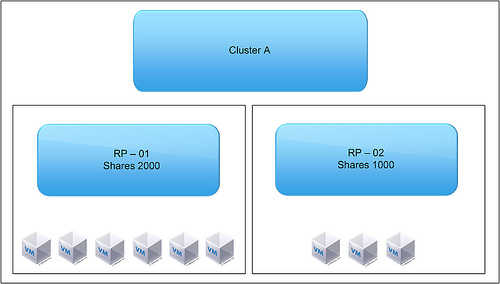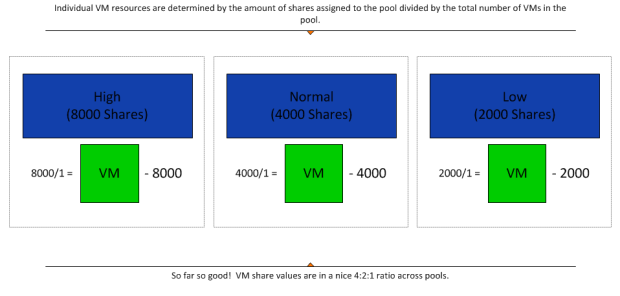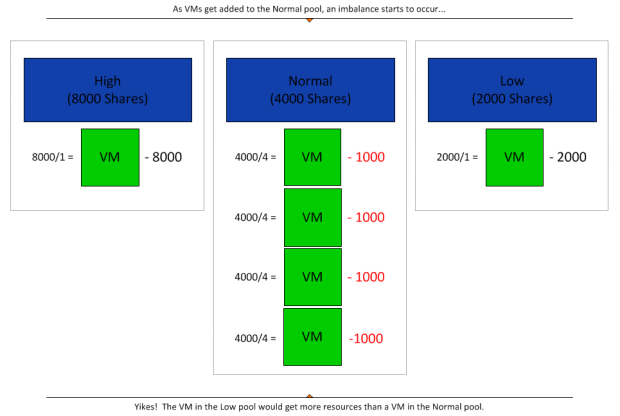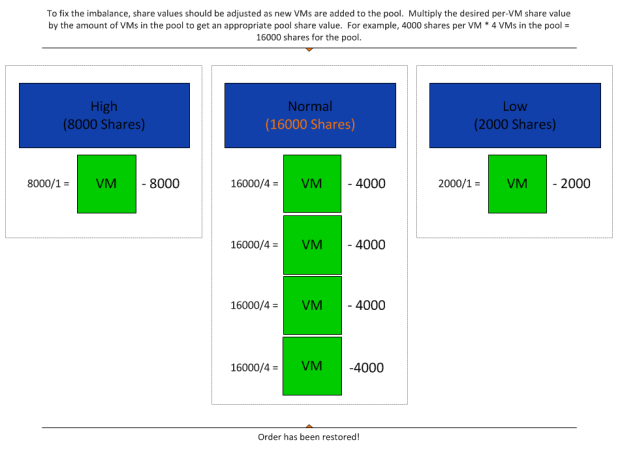I just wanted to write a blog post about Resource Pools. Resource Pools are usually labeled “Low”, “Normal” and “High” with the shares set respectively. This is the traditional example being used during the VMware vSphere 5 course. So of you might have caught on to my reset posts. The best way for me to remember/study is to post/write about it.
I have a problem with default implementations is the following:
Sibling resource pools share resources according to their relative share values.
Thanks to Duncan Epping at yellow-bricks and Nick Anderson at Speakvirtual for the diagrams.
RP – 01 -> 2000 Shares -> 6 VMs
RP – 02 -> 1000 Shares -> 3 VMs
So what would happen if these 9 VMs start fighting for resources. Most people think that the 6 VMs, which are part of RP-01, get more resources than the 3 VMs. Especially when you name them “Low” and “Normal” you expect the VMs which are part of “Low” to get a “lower” amount of resources than those which belong to the “Normal” resource pool.
This is not the really case. Sibling resource pools share resources according to their relative share values. Resources are divided eon a resource pool level, not on a per VM level. RP-01 will get 66% of the resources and RP-02 will get 33% of the resources. RP-01 contains twice as many VMs as RP-02. This will not make a difference when all VMs are fighting over resources.
Custer A have 3000 Shares total. RP-01 has all of the VMs turned on and using 2000 shares and more. We now need to turn on the 3 VMs from RP-02. First RP-01 takes the required 1000 shares. Then the 3 VMs share the 1000 shares. All 3 VMs get 33 1/3% of 1000 share.
Here is another example that breaks it down even farther.
The images speak for themselves!!!



